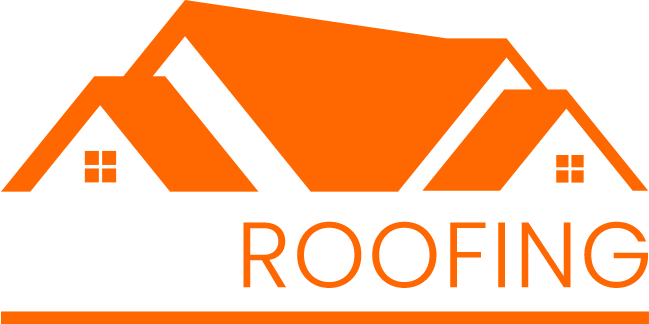
California’s Title 24 Cool Roof standards mandate that roofs meet specific aged Solar Reflectance (SR) and Thermal Emittance (TE) efficiencies or achieve a minimum Solar Reflectance Index (SRI). For new construction and reroofing projects, asphalt shingles must meet or exceed an SRI value of 20. In unincorporated Los Angeles County, they must have 0.20 SRI. These requirements are mandatory under local Green Building Standards Codes.
What is Title 24?
Title 24 is a set of building energy efficiency codes established in 1978 by the California Energy Commission (CEC). Its main purpose is to enhance energy-efficient construction options and reduce energy consumption across the state.
Title 24 not only helps Californian homeowners with lower energy costs but also reduces greenhouse emissions. Title 24 helps California stay committed to advanced sustainability.
What Are the Cool Roof Requirements of ‘Title 24’?
Cool Roof has several requirements in order to meet Title 24 regulations that are specifically designed to improve energy efficiency and reduce as much environmental impact as possible.
Cool Roof requirements focus on Solar Reflectance (SR) Thermal Emittance (TE) and Solar Reflectance Index (SRI) to ensure roofs can effectively minimize heat absorption and lower energy usage. Below is a detailed breakdown of these requirements.
- Reflectance and Emittance Standards
- Solar Reflectance Index (SRI) Requirements
- Roofing Material Options for Compliance
- Climate Zone-Specific Requirements
- Documentation and Certification Process
1. Reflectance and Emittance Standards
The Cool Roof Rating Council (CRRC) certifies roofing products to meet Title 24 standards. Cool roofs must meet specific aged Solar Reflectance and Thermal Emittance values, which ensure roofs effectively reflect sunlight and release absorbed heat. This reduces the overall heat buildup, especially in warmer climates, helping meet energy efficiency goals.
2. Solar Reflectance Index (SRI) Requirements
SRI combines Solar Reflectance and Thermal Emittance into a single value. Roofs must meet a minimum SRI of 20 for new residential and commercial construction or reroofing. This standard helps ensure compliance with Title 24 and enhances the energy efficiency of the structure.
3. Roofing Material Options for Compliance
Common roofing materials like asphalt shingles, metal, and reflective coatings can meet Cool Roof standards if certified by the CRRC. Property owners can choose materials specifically designed for compliance, balancing durability, appearance, and energy efficiency.
4. Climate Zone-Specific Requirements
Title 24 requirements vary across California’s climate zones. Cooler areas may have less stringent standards, while hotter regions demand higher reflectance and emittance values. Understanding your zone’s specific requirements is essential for compliance.
5. Documentation and Certification Process
To comply with Title 24, roofing materials must be certified by the CRRC, and documentation must be submitted during construction or re-roofing permits. Proper certification ensures products meet the necessary energy efficiency standards, simplifying the approval process.
What Are the Benefits of a Cool Roof in California?
Cool roofs offer several advantages for homeowners and businesses in California. Here are the benefits:
- Lower Energy Bills
- Increased Indoor Comfort
- Extended Roof Lifespan
- Reduced Urban Heat Island Effect
- Eligibility for Rebates and Incentives
- Environmental Impact Reduction
1. Lower Energy Bills
Cool roofs reduce the need for air conditioning by keeping buildings cooler during hot weather. This translates into lower energy consumption and decreased utility bills, especially during peak summer months.
2. Increased Indoor Comfort
By reflecting sunlight and reducing heat absorption, cool roofs help maintain comfortable indoor temperatures. This is particularly beneficial in warmer regions, reducing reliance on air conditioning.
3. Extended Roof Lifespan
Cool roofs experience less thermal stress, which can degrade materials over time. Reduced temperature fluctuations help prolong the roof’s lifespan, minimizing repair and replacement costs.
4. Reduced Urban Heat Island Effect
Cool roofs help mitigate the urban heat island effect by reflecting sunlight and reducing heat buildup in densely populated areas. This contributes to a cooler, more sustainable urban environment.
5. Eligibility for Rebates and Incentives
Many local utilities and government programs offer rebates and incentives for installing cool roofs. Homeowners and businesses can save on upfront costs while benefiting from long-term energy savings.
6. Environmental Impact Reduction
Cool roofs contribute to reduced energy consumption, lowering greenhouse gas emissions. By adopting these sustainable roofing options, homeowners can positively impact the environment.
How Does ‘Title 24’ Affect Residential Roofing?

Title 24 significantly impacts residential roofing by enforcing energy efficiency standards. Homeowners must select roofing materials certified by the CRRC and ensure compliance with reflectance, emittance, and SRI requirements. These standards help create more energy-efficient homes, reduce environmental impact, and save costs on energy bills, making cool roofs a practical and sustainable choice for California residents.
Protect Your Roof with Best Roofing LA – Southern California’s Trusted Roofing Experts
Ready to transform your home with a brand-new roof? Best Roofing LA specializes in expert roof installations across Southern California, providing durable, energy-efficient solutions tailored to your needs. From selecting the perfect materials to ensuring seamless installation, our team handles every detail with precision and care. Don’t wait to enhance your home’s value and protection—explore our new roof installation services today and schedule your consultation with Best Roofing LA!



